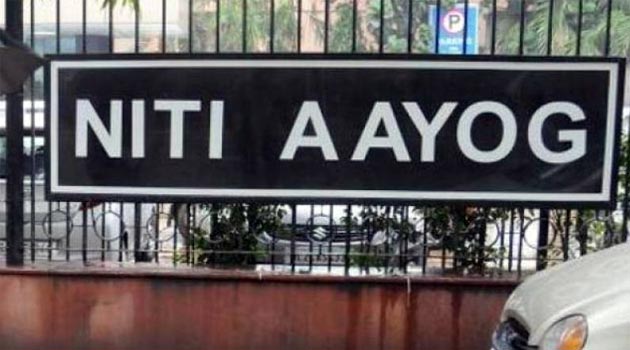‘Digital Bank’- Licensing and regulatory framework in India and way forward
Last 6 to 8 years have seen rapid development in ‘Digital bank’ across the world, and China is no exception. Digital banks have an entirely branchless digital service and the need for physical branches is replaced by non-stop, 24/7 customer service and automated systems.
These Banks have been formed by large conglomerates like WeChat, Baidu, Xiomi, Ant group etc. that have huge customer base and all the ecosystems for a seamless expansion of fully Digital Bank. Few of the Digital Banks in China are – Ai Bank, MyBank, WeBank, XW Bank etc.
During the past few years, these Banks have made remarkable success in the field of business lending, agri lending, consumer lending, financial inclusions etc.
Success story of Digital Bank- China
MYBankor Zhejiang Network Merchants Bank Co, founded in 2015 is targeting mainly smaller firms, with about 80 percent having less than 10 employees.
Most of its MSE borrowers do not have established Banking relationships with traditional banks.Infact more than 70 percent are having difficulties in getting loans previously from any financial institutions. Its loans are generally of smaller ticket size, for shorter duration, and are used primarily for working capital purposes.
It established an online-only platform that enabled SMEs to open accounts and apply for loans quickly and easily, without the need for extensive paperwork or physical branches. Big data and AI were used to assess the creditworthiness of applicants, allowing for quicker and more accurate lending decisions. They useddata of consumer repayment records from e-commerce platforms like Alibaba and Alipay, smartphone payment records, registered online customer profiles, e-commerce transactions, local government records, and insurance records to assess loan applications.
It used ‘310’ model , which included more than 100,000 risk profiling metrics and 100 credit risk models specifically suited to SME and individual lending.
It took just 3 minutes for a customer to apply for a loan and was approved within 1 minute and without any collateral.
Despite of zero collateral and interest rate between 6 to 14%, MYBank was profitable with NIM of 3 to 5% (higher than the biggest commercial bank of china), because of lower operational and delivery costs. Moreover, NPA level is also lower than the traditional Banks.
By the end of 2021, MYbank had served more than 45 million MSEs representing a nearly 30 percent increase year-on-year.
WeBank– China’s first digital bank, WeBank, was set-up in December 2014 after receiving its banking license and is now one of the largest digital banks in the world in terms of user base. WeBank is a truly digital bank with no branches or outlets. There is only a mobile app which is used for banking.
The most interesting part is that the bank doesn’t require collateral or guarantee but relies on the big data credit ratings and face recognition technology to give loan to individuals and SME borrowers.
WeBank’s cost of operation per account is only $0.5. This is 10-20 times cost effective when compared to cost of operation in a traditional bank.
With all these technical advantages, WeBank is the biggest lender in Digital banking space in China with most profitable, best return on equity and the least Non-Performing Assets (NPA).
AiBank or Baixin Bank established in 2017 initially started with online lending to consumers and small business, but later on they introduced many other products including digital bank accounts, payments, credit and wealth management. The bank has played an important role in financial inclusion by focusing on rural areas and farmers on digital only mode. As on 2022, the Bank has a client base of 50 mn and credit size surpassing 300 bnyuan.
Starling Bank is a UK-based digital bank founded in 2014 and was a granted Digital Bank licence by the Bank of England in 2016. Starling Bank had launched the UK’s first digital business bank account in March 2018. Similar Digital Banks in UK are Monzo, Firstdirect, Metro Bank etc.
These Digital banks across the globe are using advance technology like Artificial Intelligence (eKYC, Chatbox, smart collection), Blockchain, Cloud Computing, Big Data etc to provide a seamless Digital Bank experience with robust cybersecurity. They provide fully Online Financial Products and services such as consumer loan, SME Loan, Auto Loan etc.
From the above success story of few Banks especially in China, we must have come to know what a Digital Bank is all about.
It may be a new concept in India, but in many other countries, Digital Banks has become a decade old concept and many of them are competing with full-fledged scheduled commercial Bank with brick and mortar concept.
Digital Banks- Indian context
Though Indian Scheduled Commercial Banks and FIs are leveraging heavily on Digital Banking but Digital Bank is still a new concept in India.
On July 2022, NITI Aayog released a report “A Proposal for Licensing & Regulatory Regime for India” for Digital Banks. It talked about the blueprint for licensing digital banks in India.
As per the report, “Digital Banks” or DBs means a Banks as defined in the Banking Regulation Act, 1949 (B R Act) but with Digital only presence. These banks will do all the activities of scheduled commercial banks but on digital platform only.
As far as regulatory compliance is concerned it is proposed that DBs will be subject to prudential and liquidity norms at par with the existing commercial banks. It has been proposed to create a new licensing / regulatory framework as regulatory innovation and not as regulatory arbitrage.
Now question arises in our mind whether it is a Digital Banking which is currently provided by many Scheduled Commercial Banks or it is different. Let’s understand difference between a Digital Bank (DB) and Digital Banking Unit (DBU).
Digital Banks (DB) and Digital Banking Units (DBU)
Digital Banks (DB): from the examples of Digital Banks in China, we must have understood about Digital banks.In Indian context:
- DBs are Banks defined in the Banking regulation Act with Digital presence only.
- They will accept deposits, provide loans and offer other full services as per B.R Act.
- Digital bank will be an independent bank to be licensed under the Banking Regulation Act, 1949 and will follow the Reserve Bank norms on par with scheduled commercial banks.
- It will have a separate balance sheet and legal personality like other Scheduled Commercial Bank.
Digital Banking Units (DBU)
- A Digital Banking Unit is a specialized fixed point business unit or hub, set up by scheduled commercial banks, providing certain minimum digital infrastructure for delivering banking products & services digitally in self-service mode 24×7.
- DBUs do not have a separate legal identity and are not licensed under Banking Regulation Act, 1949.
- Legally, they are equivalent to Bank branches or “banking outlets” but on digital platform.
NITI Aayog’s report on Digital Bank and Proposed regulatory requirements:
- TheNitiAayog Paper focuses on providing both traditional Banks and challengers(Digital Banks) with an equal opportunities and an even playing field and will prevent any regulatory or policy arbitrage.
- Minimum paid-up capital requirement for a Digital Bank may beRs 20 crore while being in a regulatory sandbox whereas a full-fledged digital bank would need to bring in Rs 200 crore of capital.
- The report highlighted on phase wise licensing of Digital Bank – 1st phase starting witha restricted digital bank license with a limit on the size/value of the customers. In the 2nd phase, the licensee will be placed in a regulatory sandbox, i.e. it will be under a controlled regulatory environment of RBI. Finally, a full fledgedDigital Bank license may be granted based on satisfactory performance under regulatory sandbox.
- Applicants for the proposed Digital bank to have an established track record in similar industries/business such as e-commerce, payments, technology (e.g. cloud computing, AI etc).
- When it comes to access of key infrastructural enablers such as UPI, IMPS, Aadhar, e-KYC, CICs, ATM etc., NitiAayog proposes for an equal or level playing field for a Digital Bank and existing Commercial Banks and thereby suggested for an equal access to all the key infrastructure enablers in the Indian financial ecosystem, as traditional banks are having.
- As far as Prudential / Liquidity risk regulation is concerned, it will be same for both, proposed Digital bank and the incumbent scheduled commercial banks. Regulatory requirements for a Banking licence like risk weights, capital adequacy, liquidity coverage ratio etc will be included under this head. Being a full-fledged bank, all the necessary compliance pertaining to regulatory requirement of a commercial Banks will be equally applicable for Digital bank(s).
- Technology risks assume greater importance for a Digital Banks. Cyber attacks like phishing, malware, spyware, etc, will remains a challenge for Digital Banks, similar to that in case of existing brick and mortar traditional banks and also to that which have gone digital via net banking/ Digital Banking Units.
- Board-level policies and expertise in assessing evolving cybersecurity risks by mandating a defined norms for set of executive directors to have relevant skill sets as in present case of Chief Risk Officer or similar, augmented by a reward and responsibility based compensation framework that motivates these personnel to be proactive about these risks.
Why Digital Bank is important and driving force for a successful Digital Bank in India
- A major problem still remains in Indian Banking sector is inclusiveness. Certain sector of the societies is still deprived of formal banking channels, such as those with low-income, micro-businesses, farmers, or high-risk customers with no or low credit history, especially in rural areas.
- As per IFC’s (International Financial Corporation) estimates, the total credit gap in the MSME segment is Rs 25.8 trillion appx. and is growing at 37 per cent CAGR. The total demand by the MSME sector is approximately Rs 37 trillion, of which banks, NBFCs & other institutions supply approx. Rs 10.9 trillion.
- The current credit delivery systems in India are mainly paper-based, with high TAT and requiring multiple visits to bank branches. This results in high operational costs for lenders and opportunity cost for borrowers. With the advent of digital literacy,MSME borrowers now look fast approval process along with certainty regarding funds availability.
- If we analyze the success story of Digital Bank in China, particularly, for the MSME segment, then we can say that a full stack Digital Bank is the need of hour for deeper credit penetration among MSMEs and it can be seen as next stage of financial inclusion.
- One of the greatest advantage of Digital Bank is lower cost-to-serve and customer acquisition cost. Due to this factor, digital bank offers can expand their coverage to last mile of country.
- Digital Banks uses a new age technologies like predictive analyses and artificial intelligence (AI) to arrive at real time decisions for the busy MSMEs. These technologies allow them to move from traditional collateral based funding methods to advance cash flow based lending method.
- Due to adoption of AI, Big Data etc, digital banks have faster application process, with less or no paperwork. It works on simple process of downloading a banking app, entering personal details and verifying your identity by photo or video.
- According to a study by Deloitte, India will have 1 billion smartphone users by 2026 with rural areas driving the demand. With one of the World’s largest rural telecom project “Bharat Net programme” of Government of India, Internet enabled services and in particular digital banking services will also get a push.
- An per an estimate of com, 205 million Indian adults already have a digital-only bank account, and the number is predicted to increase further to 397 million within the next five years. India already has an established technology platform to facilitate digital banks.
Conclusion:
Major challenges in allowing Digital Banks licence is regulatory requirement, which need to be address first by RBI before licences could be granted to both private and public sector entities.
Allowing digital bank licence exclusively for MSMEs in a first go may bea right solution, which may take deposits from businesses also.Over the last few years, we have seen a digital explosion in almost all aspects of life and financial services are not any different.
As far as existing partnership-based neo-bank models are concerned, itfaces several challenges, such as revenue generation and viability. Further, they don’t have a bank license of their own but count on bank partners to provide licensed banking services.
As discussed above, India’s public digital infrastructure is robust and is at the cusp of operationalizing its own Open banking framework. India has the robust technology platform to fully facilitate Digital Banks in near future.
Over the past few years, many digital enablers like Open Network for Digital Commerce (ONDC), Open Credit Enablement Network (OCEN), blockchain-enabled financial system, Digital Rupee, and UPI, among others have been put into motion. These could leapfrog India as a leader-nation in digital finance. To conclude with, co-existence of Digital and Physical banking is the need of hour.




